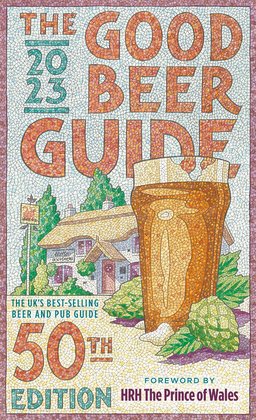Good Beer Guide selection

Each year CAMRA publishes the Good Beer Guide, a completely independent guide to pubs and licensed clubs across the United Kingdom that serve the best real ale. Listings are based entirely on assessment by CAMRA members. Alongside the pub section there is a comprehensive guide to every brewery in the UK along with beer tasting notes. The pubs nominated are selected from scratch each year. Each local branch has an allocation of pubs in the Guide, and is responsible for selecting those pubs. North Bedfordshire branch currently has 18 entries. We select our nominations using the following procedure:
1. During the year. Members attending branch pub socials are invited to assess beer quality using CAMRA’s NBSS scoring scheme. The data are subsequently combined with beer scores logged by individual members through WhatPub.
2. November. Branch GBG co-ordinator writes to all branch members, requesting nominations for the next GBG and inviting them to attend relevant branch meetings in January and February.
3. December. Branch GBG co-ordinator asks our pub contacts (who deliver the Firkin magazine) for views on current and potential GBG entries, and reminds them to attend branch meetings in January and February. A summary of beer scores collected from pub assessment visits or logged by individual members in the past year is circulated, A GBG long-list of 30-35 is compiled, including the previous year’s GBG entries and other pubs that have either been nominated by branch members or have received consistently high beer scores during the past year.
4. Early January. Our regular branch meeting includes compiling a GBG shortlist of the top 20-25 long-listed pubs. The shortlist is usually agreed by consensus, but contentious candidates may be subject to a vote of those present. The shortlist identifies:
• Current GBG entries considered safe for re-selection without a visit
• Current GBG entries that should be visited
• New candidates, which must be visited
Candidates (including current GBG entries) that have changed hands during the previous six months are not normally shortlisted unless there are compelling reasons, such as take-over by a new licensee with a recognised, strong track record for running a GBG-quality pub.
5. Mid-January to early February. Visits to shortlisted candidates are agreed as required, usually including two or three rural bus tours, a town centre walkabout, or informal visits by two or more volunteers. Beer scores are collected from members taking part and added to those already compiled before an updated summary is circulated.
6. Mid-February. A special branch meeting is held to review the shortlist. All shortlisted candidates are re-considered, including those labelled earlier as safe GBG entries. Reports from recent visits are discussed and a final nomination list is compiled, with up to three reserves in order of preference. Marginal or contentious cases may be decided by a vote of those present. Surveyors – usually the regular pub contacts – are appointed for all nominations and reserves.
7. Late February. Surveyors complete formal data surveys of all nominated candidates and reserves. If a nominated pub is withdrawn because it is expected to close or change hands, or because the business is likely to change direction, the reserves are automatically adopted in order of preference. Pub data changes are input to WhatPub as required.
8. Early March. GBG co-ordinator checks data for all listed pubs and reserves before signing off nominations to area organiser level.
9. March-April. GBG co-ordinator and Beds area organiser update nominations if any entries have to be withdrawn and replaced by reserves, with branch committee approval. If there are no agreed reserves available, the vacant place is offered to the other Bedfordshire branches.
